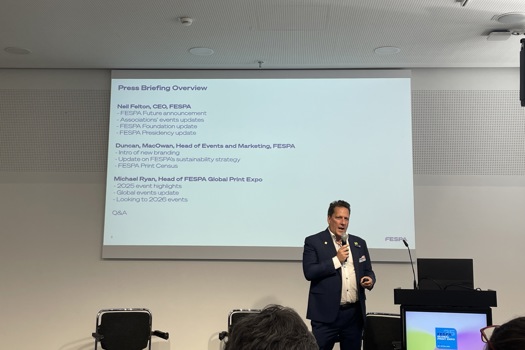The 46, 52 and 63 versions of the machine were launched in 1998. A high-speed 63 called the Marlin was introduced at the same time, aimed squarely at the newspaper sector. ERCM area sales manager Ken Tucker says: “These machines had the same quality as drum machines and came off the back of technical knowledge that ECRM had accumulated over the years.”
ECRM’s level of engineering had so far allowed it to develop parts and solve problems for other manufacturers. Now it allowed them to come up with a product that was high in quality and was, according to Tucker, robust and without the niggles of other, similar machines. Dancer rollers and online bridges to the processor were just two of the additions to the Stingray that set it apart from previous models.
Built-in buffer
“The dancer roller took the pressure off the film before imaging,” Tucker explains. “This reduced the tightness that would often occur at the end of a film.” The built-in buffer system meant that the processor would not pull on the film.The result was that the film would only go through the processor under its own weight. Tucker continues: “We also had to make sure that there was very little film waste. This was achieved because you could punch the film head and tail anywhere on the reel. This pinning also made the imaging very accurate.”
ECRM still manufactures around 25 Stingrays a month to meet demand. “We are pretty much the last ones standing,” says Tucker. It may be small, but there is a demand in the UK and a handful of Stingrays have been sold both new and used this year. “People who have never had an imaging machine sometimes buy one as a stepping stone. They are also still extremely popular as an export to Africa and across India.”
The manufacturer will refurbish used machines and check their drive rollers and optics. It will also update the RIP before selling it secondhand. “The refurbished machines do sell fast and we sell them on a first come, first serve basis,” says Tucker. ECRM is happy to look at any of its machines – even those bought elsewhere – and has third-party engineers across the country as well as six full-time engineers.
Many of the Stingrays sold eight years ago are still working well today, and some firms that have changed over to CTP have kept them as back up machines. It is estimated that up to 200 have been sold in the UK since the launch. A new 63 model costs around £28,000, with a similar six-year-old model going for between £12,000 and £14,000.
SPECIFICATIONS
Max recording width
• Stingray 63: 635mm
• Stingray 52: 521mm
• Stingray 46: 461mm
Laser
• 10mW visible red
Resolutions
• 12 steps from 1,000dpi to 3,556dpi
Max line screen
• 200lpi
Price
• Used 2000 Stingray: £12,000 to £14,000
• New Stingray 63: £28,000
What to look for
• Check drive rollers
• Age of RIP
• Optics assembly
ECRM Stingray
Arriving just as CTP was taking off, the ECRM Stingray was an imagesetter that promised speed and quality to rival the new technology. There is no doubt that the changeover to CTP is now almost complete - at least in Western markets. However, imagesetters are still manufactured and have found buyers in the new and secondhand markets in India, Africa, and even a handful here in the UK.








